
Images of the Ruled as "Atlas"
[Updated June 13, 2011]
I have gathered here some images which depict "the ruled" as Atlas with the burden of the world on his shoulders. Several of them come from the period of the French Revolution and show the Third Estate (usually a poor peasant) carrying the burden of the First Estate (the Church) and the Second Estate (the Aristocracy) on his back. There is also an amusing parody which shows the reversal of this unpleasant relationship: the Church and the Aristocracy now carry the Peasantry on their backs. I conclude by suggesting that behind Ayn Rand's notion of "Atlas shrugged" is a deep-seated belief in this kind of class analysis which goes back to at least the French Revolution: that the productive sector of the economy (the "capitalists" in Rand's vocabulary) carries the rest of the world on its back and that Rand is calling for "Atlas" to cast off this onerous burden by "shrugging" his shoulders. The series below begins with one of my favourites which is by James Gillray (or perhaps C. Williams (d. 1830)) which depicts the British people ("John Bull") continuing to bear the burden of the unproductive monarchy and military establishment on his tattered shoulders even after the war against Napoleon had finished.
 |
James Gillray (or perhaps C. Williams (d. 1830)), "The
British Atlas, or John Bull supporting the Peace Establishment (1816)
[More] |
 |
"A faut espérer q'eus jeu finira bentôt"
(Let's hope that this game will soon come to an end) A French Revolutionary era cartoon showing a pointy-eared peasant wearing sans-culottes and clogs, bent over double carrying well-dressed representatives of the Priesthood and the Aristocracy on his back. Note that he is so busy carrying this burden that he cannot keep the birds from eating his grain or the rabbits eating his cabbages. (date) |
 |
"Le peuple sous l'Ancien Régime" (The People under
the Old regime) The Third Estate in this images has the burden of three opressive groups to carry on his back: the Monarchy, the Priesthood, and what looks like a Lawyer. Note that the peasant is blind, chained, and emaciated. |
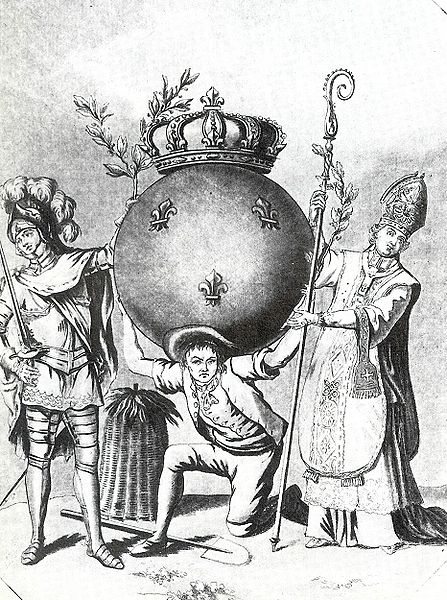 |
The peasant carries a sphere with royal symbols
it (crown, fleur de lys) either side of which stands a member of the Church and a Knight. Note the
look on the face of the peasant who is looking directly at the viewer. |
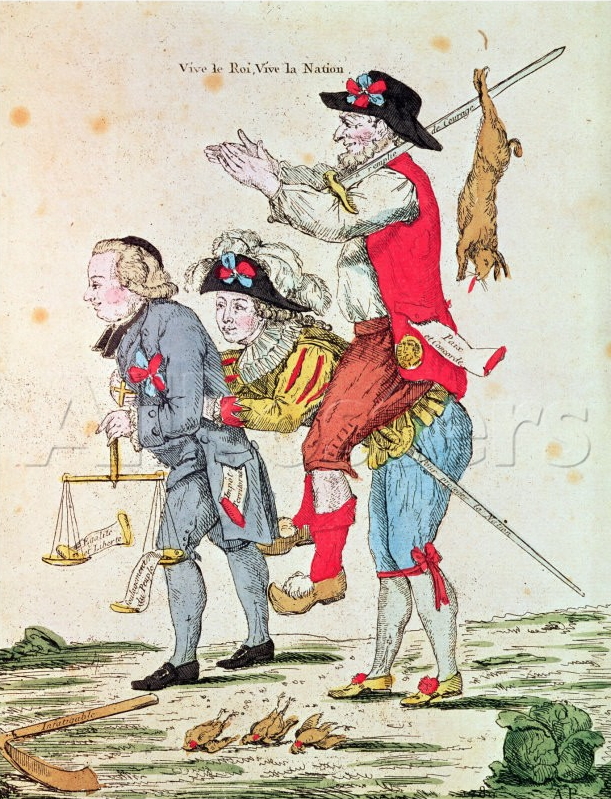 |
"Vive le Roi, Vive la nation" (Long live the King,
Long live the Nation) An amusing parody of the cartoon above where the roles have been reversed: the peasant, now armed with a sword, is sitting on an Aristocrat who in turn is holding onto a member of the Clergy. Note that the rabbit which had been eating the peasant's cabbage has been killed and will soon be eaten for dinner; the birds which had been eating his grain have been killed as well; the Clergyman carries a scale of justice with revolutionary slogans written on it. |
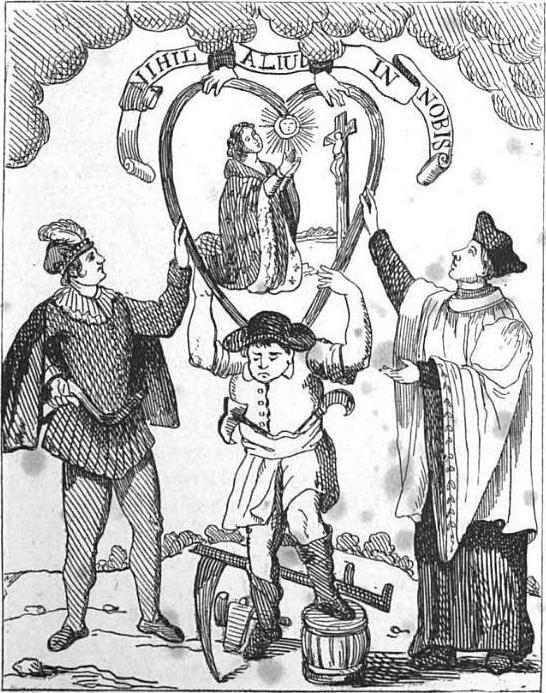 |
"Nihil aliud in nobis" (There is nothing
else in our power) (1867, copy of a 16thC original from Provence) In the middle of the picture is a peasant who carries in his belt or is surrounded by his tools (a scythe, a reaping hook, a pick axe, a spade, a wine barrel). On his shoulders he carries a heart-shaped object in which is depicted a women kneeling in prayer before a crucifix and a shining sun (perhaps the state itself?). The motto reads "Nihil aliud in nobis" (There is nothing else in our power). On either side of him stand a Nobleman and a Clergyman who are holding the heart in place but not supporting its full weight. |
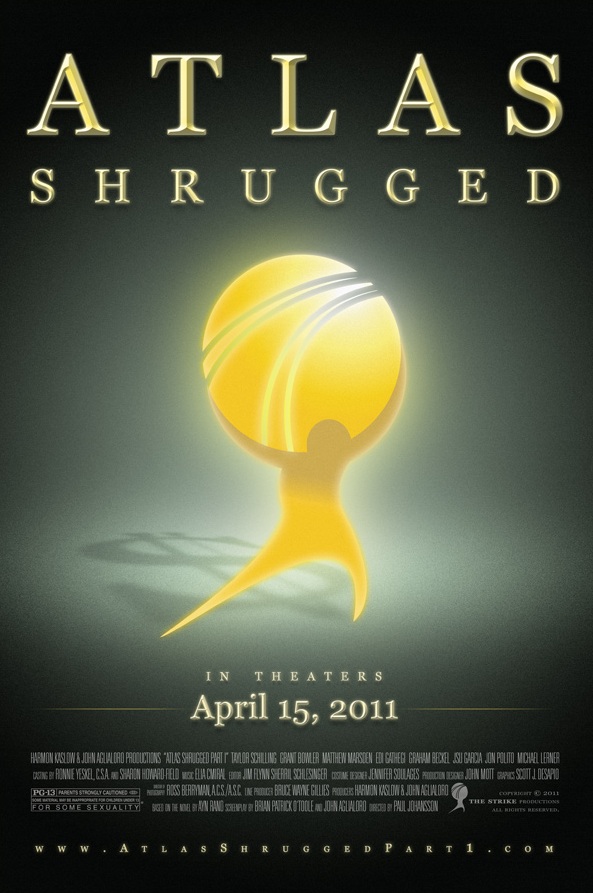 |
The Movie Poster for the film of Ayn Rand's novel
Atlas Shrugged (novel 1957; film 2011) In the context of the images above I can't help feeling that this image of Atlas also suggests a notion of class exploitation with a hidden threat that one day Atlas will "shrug" and end the relationship. |
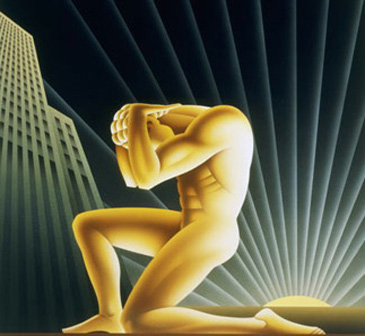 |
An image of Atlas used on the cover of a recent
edition of Rand's novel Atlas Shrugged. It suggests to me that Atlas is covering his eyes because he has just seen the recent movie version of the book. |